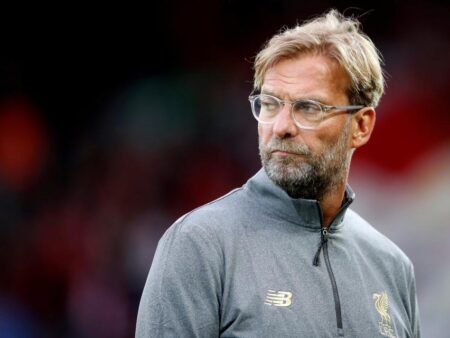The Singapore Grand Prix, a spectacle of speed under the city lights, often delivers unexpected heroes. Yet, amidst the jubilation for George Russell`s surprising victory and McLaren`s defense of their Constructors` title, one incident captured the spotlight, sparking intense debate and revealing the intricate pressures boiling within the Woking-based team: the opening-lap contact between teammates Lando Norris and Oscar Piastri. This wasn`t merely a fleeting brush on track; it was a potent symbol of ambition, team dynamics, and the razor-thin line a championship contender must walk.
When Teammates Collide: The Singapore Flashpoint
The incident unfolded in the chaotic opening lap. From fifth on the grid, Norris executed a forceful start, rapidly gaining positions. As he surged into Turn 1, an opportunity presented itself on the inside of his teammate, Piastri. The two McLarens navigated Turn 2 side-by-side, but as they approached the apex of Turn 3, with Max Verstappen ahead, the space diminished rapidly. Norris, attempting to avoid Verstappen, clipped the Red Bull`s rear, causing his car to momentarily lose control and slide sideways into Piastri, who was carefully trying to navigate the outside line. The contact was brief but undeniable, leaving Norris with front-wing damage and Piastri with a simmering frustration.
From the detached perspective of the FIA stewards, it was a “racing incident” — a common occurrence in the frantic opening moments of any Grand Prix, warranting no further investigation. But within the cockpit of Car 81, Piastri`s perspective was acutely different. Without the benefit of external replays, it appeared his teammate had simply barreled into him. His subsequent radio exchange with race engineer Tom Stallard painted a vivid picture of immediate disbelief and irritation:
Piastri: “Are we cool with Lando barging me out of the way, or… what`s the go there?”
Stallard: “Oscar, we are looking at it. Let me get back to you.”
A few moments later, after the stewards` decision:
Stallard: “No further action from the stewards. As a team, we can see Lando had to avoid Verstappen, so we won`t take any action during the race. We can review further afterwards.”
Piastri: “That`s not fair. Sorry, that`s not fair.”
Stallard: “Oscar, opportunity to review together. Focus on this race, mate.”
Piastri: “Yeah, but if he has to avoid another car by crashing into his teammate, that`s a pretty s— job of avoiding.”
This candid dialogue wasn`t just background noise; it was a raw display of a driver`s perspective in the heat of battle, where every inch matters and every perceived injustice stings.
The Aggressor`s Rationale: Norris`s View
Norris, often criticized for being too cautious in opening laps, saw the move as an instinctual, justifiable attempt to gain position. His explanation after the race was unequivocal:
“Anyone on the grid would have done exactly the same thing as I did. So I think if you fault me for just going on the inside and putting my car on the inside of a big gap, then, yeah, I think you shouldn`t be in Formula 1.”
He conceded a slight misjudgment with Verstappen but maintained that the initial move on Piastri was fair game. For Norris, contact with a teammate is the last thing he wants, especially given the media scrutiny, but in the relentless pursuit of track position, such calculated risks are inherent to the sport`s nature. His sentiment echoed a common F1 credo: if the gap is there, you go for it.
The “Papaya Rules” and McLaren`s Delicate Balance
This incident throws McLaren`s much-touted “papaya rules” into sharp relief. These internal guidelines, established to foster fierce but clean racing between their drivers, dictate that while competition is encouraged, physical contact is strictly forbidden. The team has, in the past, shown willingness to intervene, as seen at the Italian Grand Prix where Piastri was instructed to cede a position to Norris after a controversial pit stop. So, why no intervention in Singapore?
Team Principal Andrea Stella offered a nuanced explanation. McLaren`s pit wall concluded that the contact between their cars was a direct consequence of Norris`s initial collision with Verstappen. Therefore, it was categorized as a secondary effect of a broader racing situation, rather than a direct, unfair act by Norris against Piastri. This distinction is crucial, transforming an intra-team collision from a potential penalty into an “unfortunate racing incident.”
Stella, a master of calm diplomacy, acknowledged Piastri`s frustration as a natural, even desirable, expression of a competitive driver. He actively encourages his drivers to voice their immediate feelings over the radio, rather than internalize them, believing it leads to healthier post-race discussions. This approach, while transparent, also highlights the immense pressure on team management to parse split-second incidents with both fairness and the overall championship picture in mind.
The Unfolding Drama: A Championship on the Brink
With six races remaining, the stakes could not be higher. Piastri currently holds a 22-point lead over Norris, while Verstappen, fresh off a second-place finish, is now just 63 points behind Piastri. Should these gaps continue to shrink, the internal pressure within McLaren will escalate exponentially. Every move, every contact, no matter how minor, will be scrutinized under the championship microscope.
McLaren`s “let them race” philosophy, admirable in its intent, is a constant tightrope walk. It requires unwavering trust, clear communication, and a shared understanding that ultimately, the team`s success hinges on both drivers performing at their peak, ideally without turning into each other. As Stella himself notes, managing two drivers with individual championship aspirations is inherently difficult, a foundational principle that must be protected, even when it presents significant challenges.
The Singapore incident serves as a stark reminder that in the high-octane world of Formula 1, good intentions and carefully crafted rules can quickly fray under the immense pressure of competition. As the championship draws to its thrilling conclusion, McLaren`s ability to navigate these personal and professional dynamics will be as critical as the performance of their cars. The “orange tightrope” will only get higher, and the walk, undoubtedly, more perilous.









